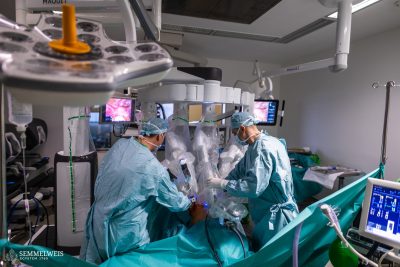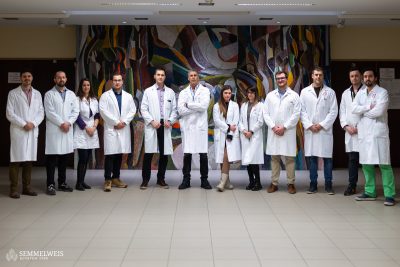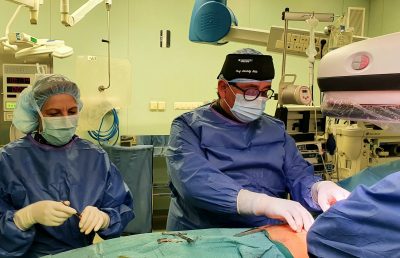Sándor Erdős, a fifth-year student at the Faculty of Medicine, is studying the possible uses, as well as the physiological and psychological effects of virtual reality (VR) in pediatric oncology, under the framework of the Students’ Scientific Association (TDK) program. He believes that VR technology, which is mainly used for entertainment and distraction, can help make easier the days spent in hospital, without the use of pharmaceuticals. He was recently awarded Semmelweis University’s Innovation Award for the most innovative TDK study, for his research conducted at the 2nd Department of Pediatrics.
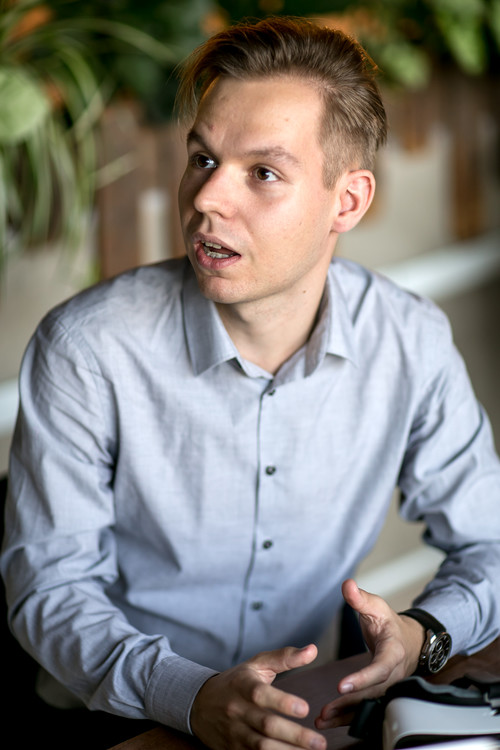 Sándor Erdős said he had always wanted to help people in some way, while he is also interested in video games, computers, game consoles and anything related to technology. This is where the idea came from two years ago, when he joined the TDK program, to combine his work with his hobby. He is grateful for his supervisor, Dr. Klára Horváth, for making it possible for him to carry out this innovative and leading-edge research. The study is being conducted on oncology patients aged 8–18 at the 2nd Department of Pediatrics, who are under chemotherapy and suffering from side effects such as fatigue, nausea, vertigo and vomiting. He added that the effects are only exacerbated by the stress that hospitalization causes, and the mitigation of these effects has not been fully solved yet. Therefore, they wanted to find new types of solutions for the problem, said the student, who believes that the VR program can cause enough distraction to the human mind that it ignores ongoing physical and mental problems, which in turn can significantly improve patients’ quality of life while in hospital. With his research, he aims to prove that VR can decrease fatigue, anxiety and pain sensation, have a beneficial effect on time perception, as well as reduce the heart rate, blood pressure and skin impedance. His long-term goals also include confirming that VR therapy reduces pain and antiemetic medication use.
Sándor Erdős said he had always wanted to help people in some way, while he is also interested in video games, computers, game consoles and anything related to technology. This is where the idea came from two years ago, when he joined the TDK program, to combine his work with his hobby. He is grateful for his supervisor, Dr. Klára Horváth, for making it possible for him to carry out this innovative and leading-edge research. The study is being conducted on oncology patients aged 8–18 at the 2nd Department of Pediatrics, who are under chemotherapy and suffering from side effects such as fatigue, nausea, vertigo and vomiting. He added that the effects are only exacerbated by the stress that hospitalization causes, and the mitigation of these effects has not been fully solved yet. Therefore, they wanted to find new types of solutions for the problem, said the student, who believes that the VR program can cause enough distraction to the human mind that it ignores ongoing physical and mental problems, which in turn can significantly improve patients’ quality of life while in hospital. With his research, he aims to prove that VR can decrease fatigue, anxiety and pain sensation, have a beneficial effect on time perception, as well as reduce the heart rate, blood pressure and skin impedance. His long-term goals also include confirming that VR therapy reduces pain and antiemetic medication use.
Elaborating on the details of the process, Sándor Erdős said that as part of the research, a child receives a 30-minute virtual reality session during one of the days on the chemotherapy block, with the patient using VR glasses to be placed into a computer-generated environment. Currently, they are using two computer programs during the treatment: one is a computer drawing game, where the wearer of the glasses is surrounded by a 360-degree canvas that they can draw on anywhere they want. This is a form of self-expression, and the children create beautiful things, the student emphasized, adding that it is good to see the “mental charge” that they have in them. The other is a so-called connect-the-stars game, which is also very popular and anyone between the ages of 8 and 18 can immerse themselves in it, it is quite spectacular and exciting, said Sándor Erdős about his experiences, noting that they have to carefully consider the types of games they choose, which is why he himself also takes part in the testing process. They constantly monitor the effects caused by VR treatment: they measure blood pressure and skin impedance, which essentially provides information about the sympathetic nervous system (like when we are nervous and our palm or forehead sweats), he pointed out. They also observe how comfortable the children are while playing the game, talking to them during the entire process. A traditional questionnaire is used to measure their fatigue, anxiety and sense of time. The TDK student emphasized that while playing the 30-minute game, the kids feel that a lot more time has elapsed. As a control condition of the study, the relationship between mobile phone games and VR is also observed, he added.
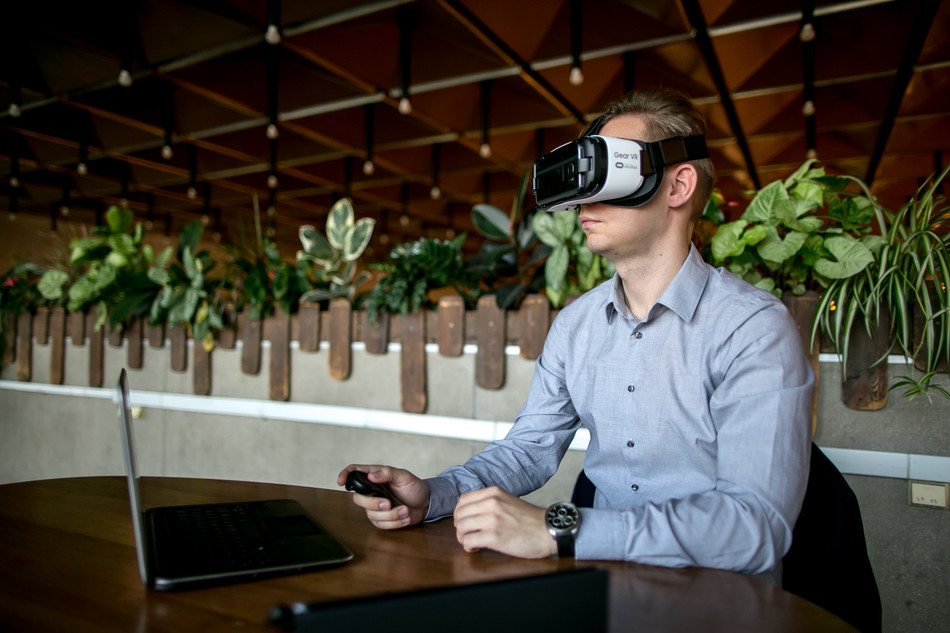 “I feel very energized when I leave the children after the treatments, it feels good to be able to take them out for a little while from within the walls of the hospital and spirit them away to another place, helping to make their stay at the hospital at least a little better,” he said. He added that during the four months that the study has been running, they have used the treatment on six children, which they would like to increase to 20 or 30 in the future. He hopes to be able to report on their findings at the 2020 TDK conference.
“I feel very energized when I leave the children after the treatments, it feels good to be able to take them out for a little while from within the walls of the hospital and spirit them away to another place, helping to make their stay at the hospital at least a little better,” he said. He added that during the four months that the study has been running, they have used the treatment on six children, which they would like to increase to 20 or 30 in the future. He hopes to be able to report on their findings at the 2020 TDK conference.
His future plans include mapping out the possibilities for using VR in other illnesses, as well further studying its effects on stress. He noted that by recently winning the innovation scholarship, many avenues have opened up before him that could bring significant results in the future. For example, he would like to develop a specific program that maximizes the relaxation effect, which could then be used in any area of health care. As a long-term goal, he would like to see hospitals set up “VR rooms” where patients can go to get away for a little while from the hospital environment, and visit the Great Wall of China of take a dive into the sea if they want. This is the future, he said, and virtual reality can open gates that have a positive effect on hospitals.
Bernadett Bódi
Translation: Tamás Deme
Photo: Attila Kovács – Semmelweis University
